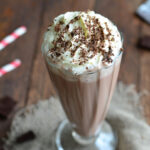
Menu Items You Should Definitely Avoid

Chicken Parmesan, for instance. No way. You’ll see why. You will also discover plenty of hidden secrets lurking behind common restaurant offerings.
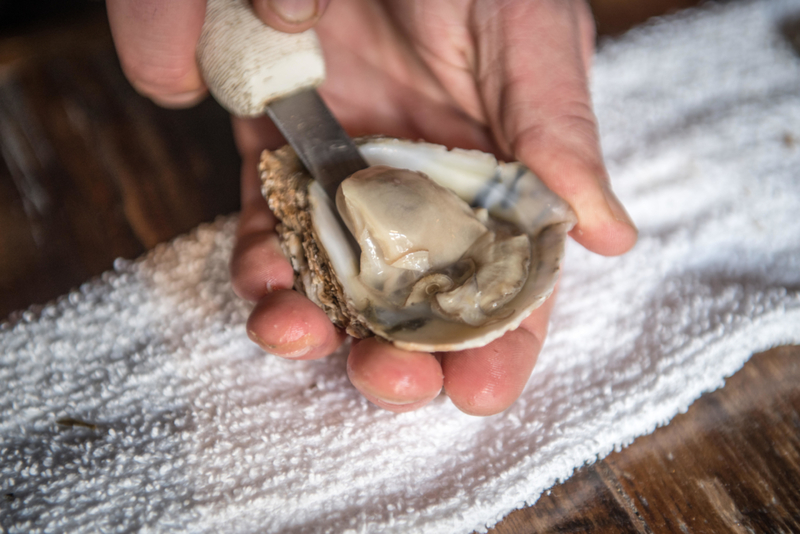
One in five people die from this infection, and that is because it infects the bloodstream, causing serious skin lesions that can lead to limb amputations. Pass on the oyster shooters. Only eat cooked oysters.
Why Risk Hollandaise Sauce?
The classic eggs benedict topping has likely been left out for hours at room temperature, and that means it could make you sick. The smooth mixture of butter, cream, and salt is made with raw egg yolks which are not cooked to the recommended temperature of 160 F. The problem? A foodborne illness caused by Salmonella.
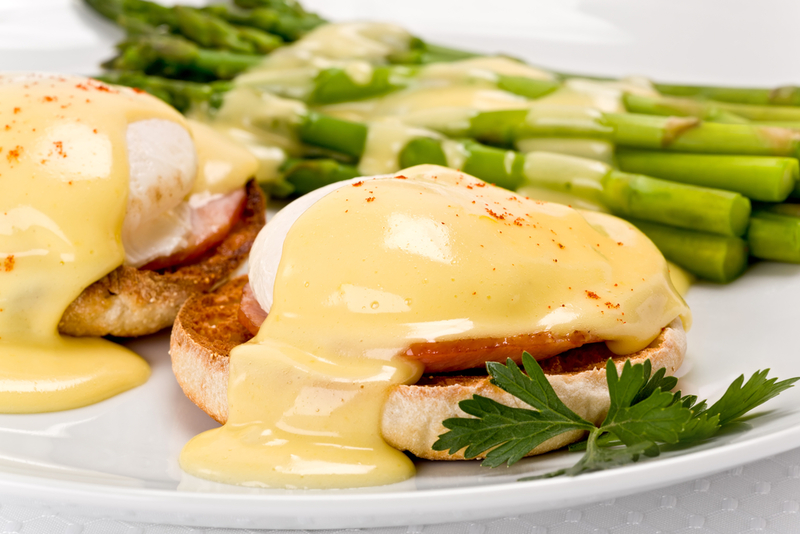
The gastrointestinal mayhem lasts four to seven days and can appear six hours to six days after consumption. Former celeb chef Anthony Bourdain once noted, “Not for me. Bacteria love hollandaise. And nobody I know has ever made hollandaise to order.”
How Long Has That Ketchup Been Around?
Many restaurants leave ketchup out on the table for your dining convenience. Have you ever wondered why the bottle is always full? Here’s what happens. It looks more appealing to have a full bottle of ketchup sitting out, so, a common practice is to combine half-full bottles from other tables to refill yours.
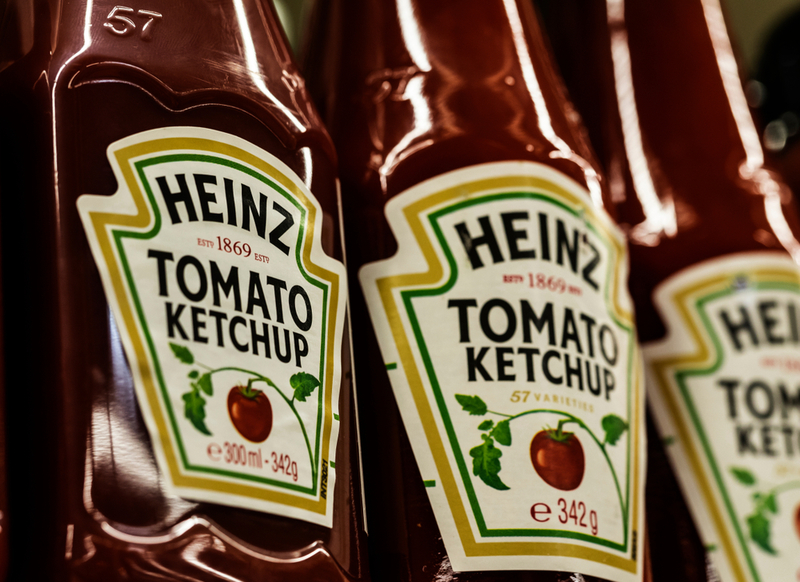
Restaurants are able to avoid health code infractions, in general, depending on the state in which it operates. Those little packets are looking better and better!
Chicken Nuggets Are a No-No
At fast-food restaurants, it is best to steer clear of chicken nuggets. In a 2013 study published in the American Journal of Medicine, researchers found more parts than actual chicken. For instance, one sample contained half muscle tissues, and the rest blood vessels, fat, and nerves.
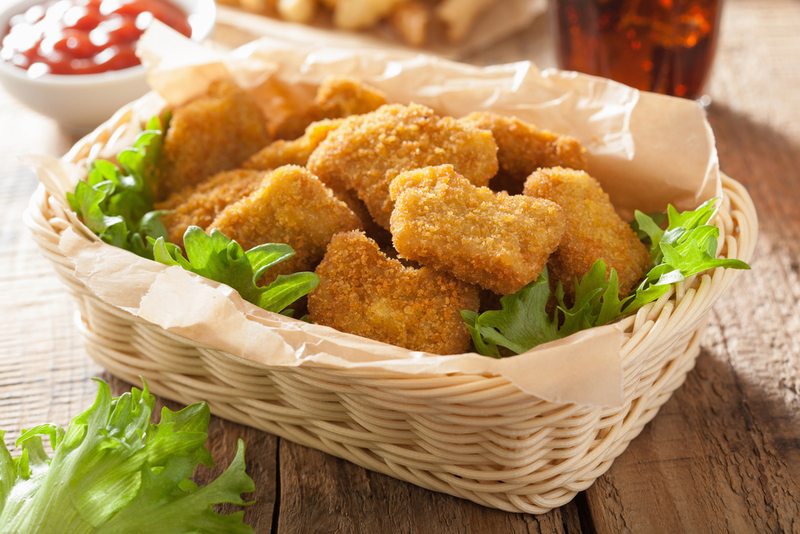
According to one researcher, “What has happened is that some companies have chosen to use an artificial mixture of chicken parts.” Adding, “It is really a chicken by-product high in calories, salt, sugar and fat that is a very unhealthy choice.” Worse than that, ex-fast food employees reveal nuggets are left sitting out under heat lamps well beyond health agency recommendations.
Chicken Parmesan Is Always Overcooked
Ask any chef and they will advise you to steer away from ordering the chicken parm. Chef Phil Pretty is known for saying that he would never order the dish. It’s always frozen before cooked and tastes like a gross version of chicken nuggets.

Here’s the problem: the dish is breaded and cooked and then cooked again when it is baked. Given the fact that chicken is not a meat conducive to overcooking, you’re going to end up with a rubbery lump that challenges your cutlery skills.
Conserve Water
Depending on where you are dining, the complimentary tap water may be laced with small amounts of contaminates. The health risks involved can range from lead poisoning, as in Flint, Michigan, for example, to a gastrointestinal infection. Sometimes the tap water just tastes bad, whether or not it is otherwise contaminated.
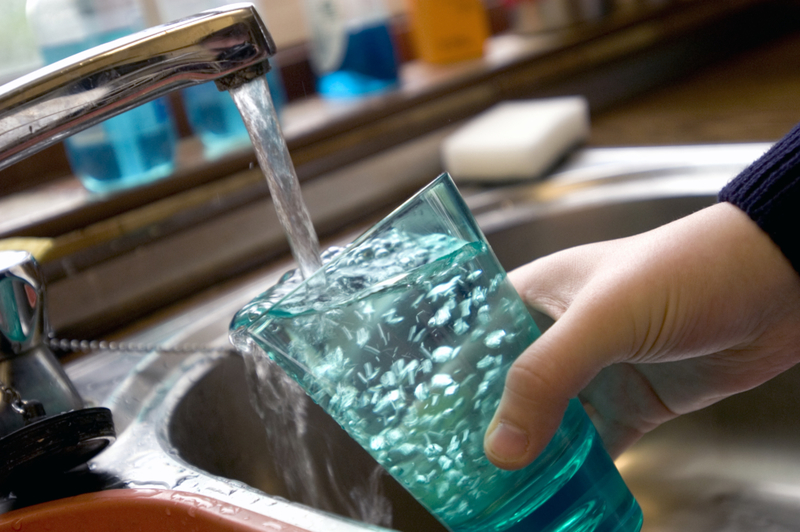
Tenacity Brewing, a local Flint establishment, made certain to announce to their patrons that the water they use in brewing is filtered and tested to be lead-free. Most restaurants do not make such claims. So, go ahead and take a chance on tap water. Or, instead, opt for a bottle of a bubbly variety or try a nice mineral water.
The Soup Special Is Yesterday’s Special
A bowl of soup on a chilly day might seem like a light meal that will really hit the spot. However, a sandwich or a salad might be more nutritious. A creamy bisque, chowder, or cream of broccoli contains more calories and fat than daily recommended and the chicken noodle serves up more sodium than you need in a week.
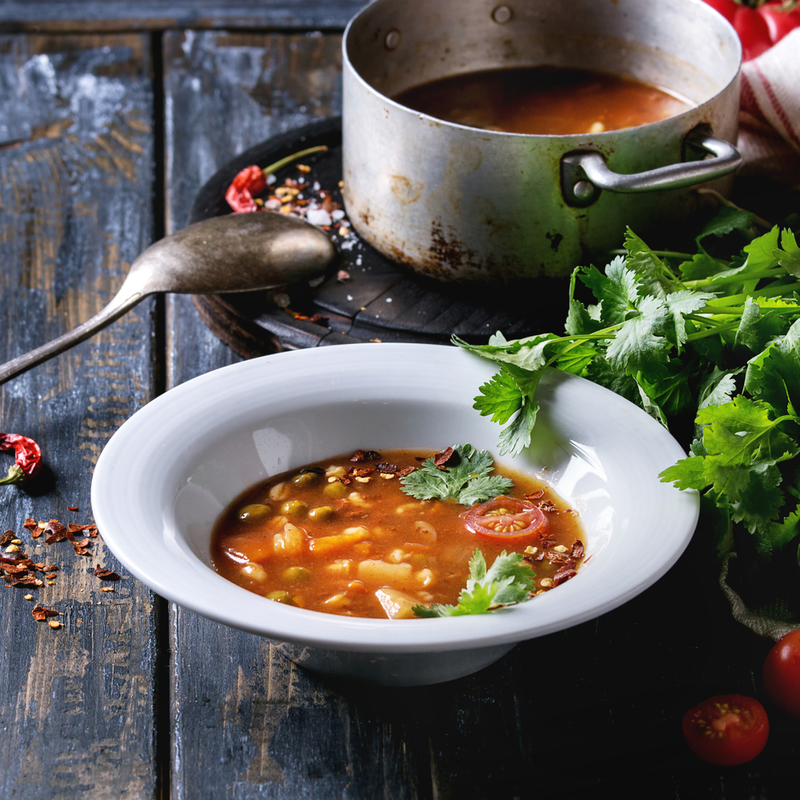
If that’s not discouraging enough, you should know that the soup specials are usually a concoction of the previous day’s meals left as scraps. Don’t order soup late in the day. That means it has been sitting in the pot all afternoon.
Sprouting Bacteria
Even though sprouts seem like one of the healthiest crunchies to add to a salad, here’s a few things you might want to know. S ince 1996, sprouts caused at least 30 outbreaks of food poisoning which resulted in new regulation protocols for bean sprouts. These new recommendations were instated in 1999.
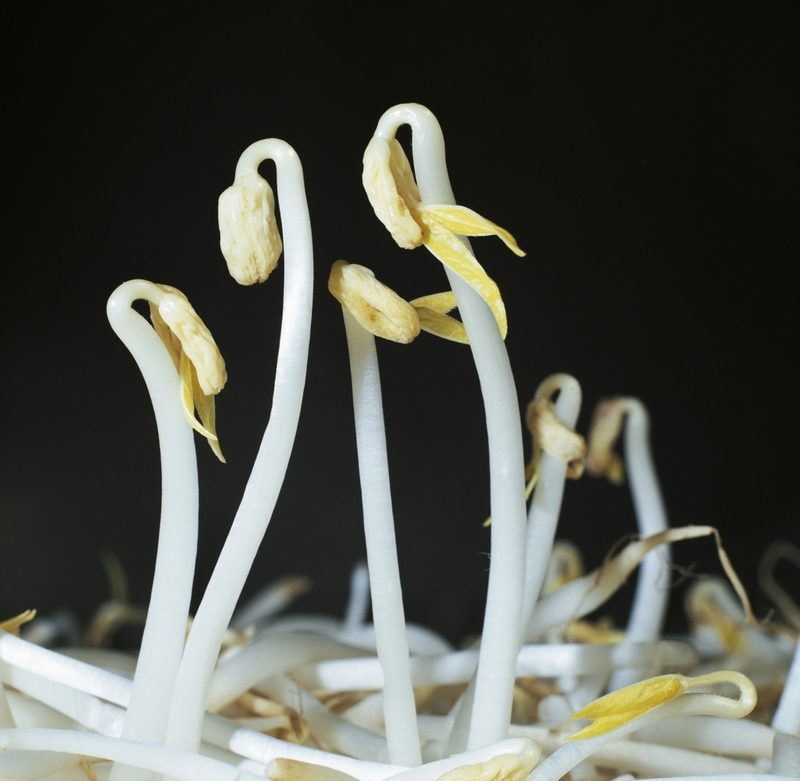
Sprouts are cultivated in a warm, damp environment which is an ideal condition for harmful bacteria such as E. coli and Salmonella to propagate. Listeria is also a concern. Ordering cooked sprouts is one way to avoid the pathogens found on raw sprouts.
The Buffet . . .
The perfect place to swap germs. Food Safety News calls it the “Bacterial Buffet: All-You-Can-Eat Illness.” The reasons are different than you might think. Of course, we wonder if food safety regulations regarding food temperatures are upheld, but what, for instance, happens when a serving spoon gets dropped into the heap of food?
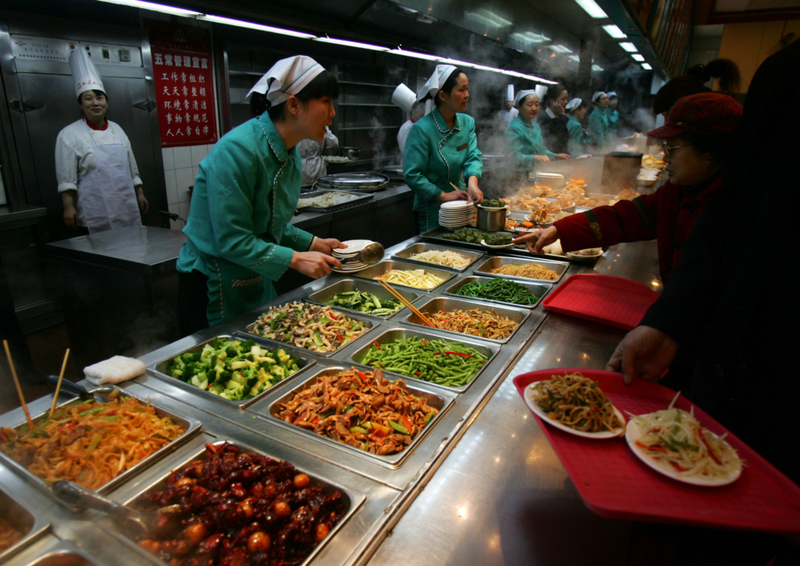
The entire platter must be discarded. Do you imagine that happens each time? Another issue involves the actual serving spoons. How many hands have touched that utensil before yours? Luckily, restaurants are required to change them every four hours, but still. Four hours is a long time for germs to spread.
Is the House Salad the Best Value?
Contrary to common sense, the house salad, generally a small pile of greens and shaved carrots, is not the best choice if you’re looking for some bang for your buck. The mark up on those inexpensive vegetables is exponential.

If the menu price is around $10, you can bet the restaurant paid no more than $2 to make it. So, go ahead and order one with some nutritional value like nuts, cheese, avocado, or other yummies. The house salad may be the least expensive salad option, but you’re getting the least as well.
The Second-Worst Salad Value
Besides the house salad, the next-least value on the salad menu is the wedge salad. This plate consists of a wedge-shaped slice of iceberg—the lettuce with zero nutritional qualities—drizzled in fattening bleu cheese, sprinkled with some chopped tomatoes, and, if you’re lucky, maybe topped with a spray of diced red onion.
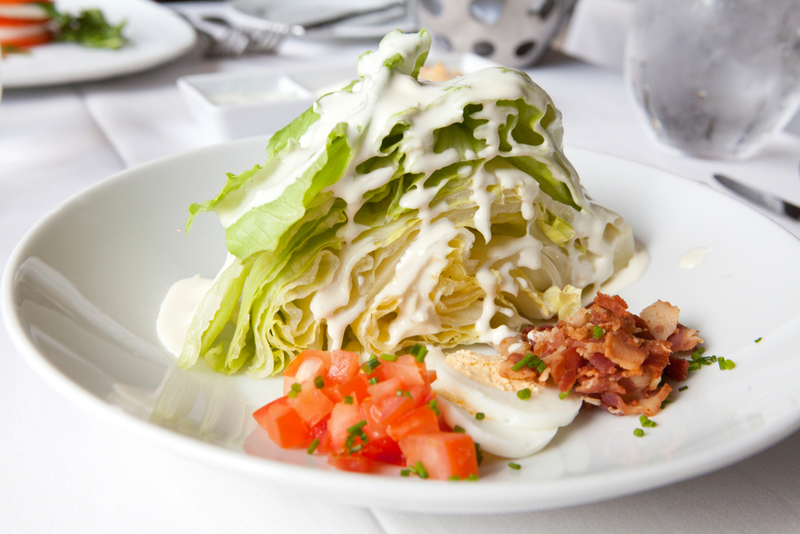
Bacon bits, which may or may not be actual bacon, are a required topping. These inexpensive ingredients make the salad profitable for the eatery. But the mark up is just as high as the house salad, so, go ahead, and choose something else.
Seafood’s Little Secret
Most people do not know that fish markets are closed on weekends. So, if you order a seafood entrée on Monday, that little fillet may have been chilling on the ice for three days. Never order seafood on Mondays.

But don’t take my word. New York Times bestselling book, Kitchen Confidential by chef Anthony Bourdain said that he never ordered fish on Monday unless he was at at a four-star restaurant.
Fresh Squeezed Pathogens
The freshest juices from the healthiest juice bars may be packed with more vitamins than a glass of Minute Maid orange juice could ever provide, but watch out for those pathogens! Most juices sold at stores are pasteurized. Pasteurization is a heating process that kills any harmful bacteria that may have entered the juice.
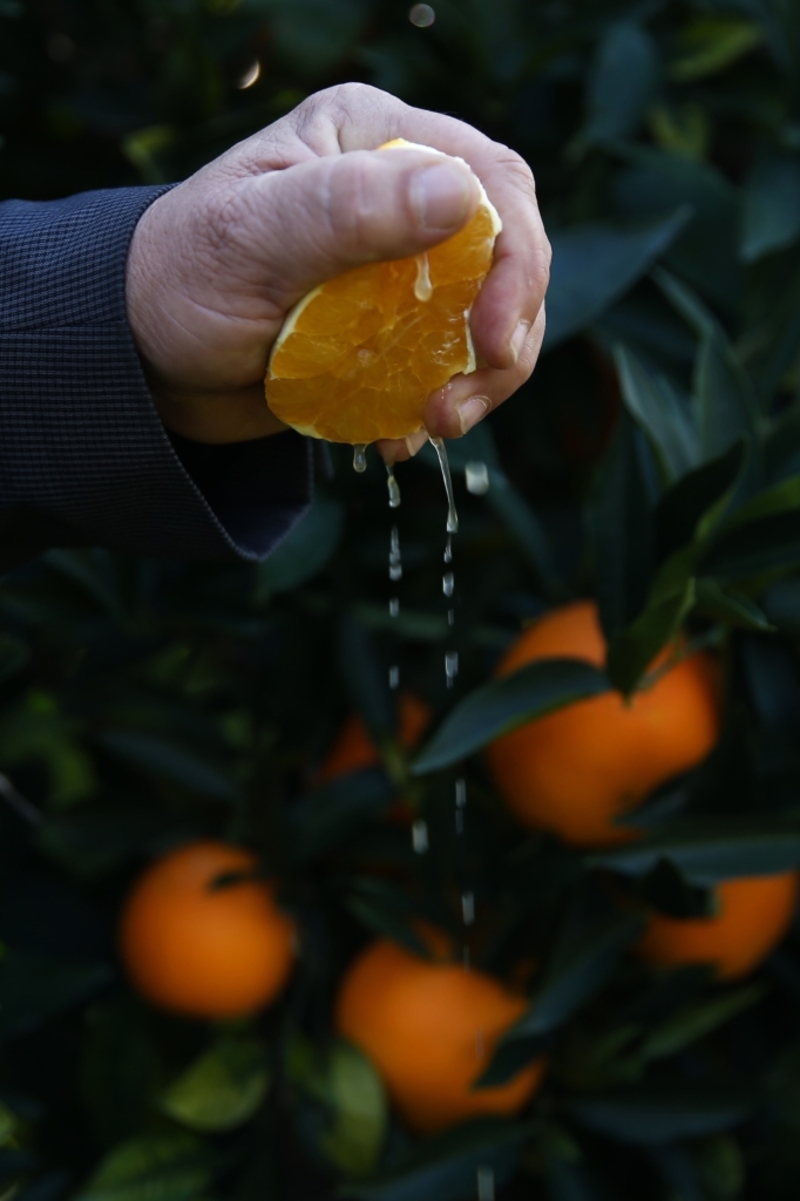
Foodborne contaminants like Listeria, E. coli, and Salmonella are summarily removed. Another risk is pesticides. According to Food Safety News, strawberries, apples, nectarines, peaches, celery, grapes, cherries, spinach, tomatoes contain the most toxic residue.
The Bread Basket
We all know the breadbasket is full of empty calories, carbs, and it is going to ruin our appetite. Each slice has at least 100 calories, and then, of course, we slather on the butter. Be patient! Wait for your meal. As another incentive, the breadbasket is also a known communal germ repository.
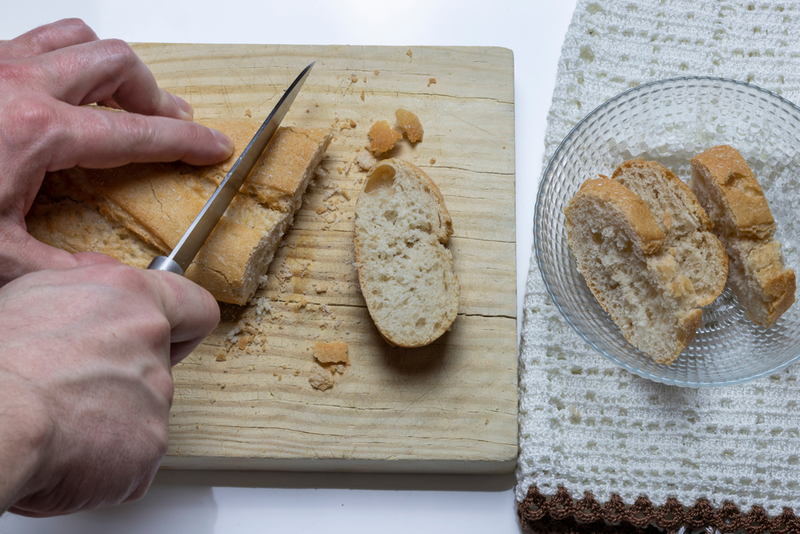
How many hands have touched those slices as they were being baked, cut and served? Other hands also have dug around in the slices, too, by the time you pick your slice.
Cheese Needs to be Pasteurized Too
But not all cheese is properly treated. Soft cheeses like brie, queso fresco, and camembert do not use pasteurization. Technically, they do not used pasteurized milk in the process. The risk posed is contamination by harmful bacteria such as Listeria and Staphylococcus aureus.
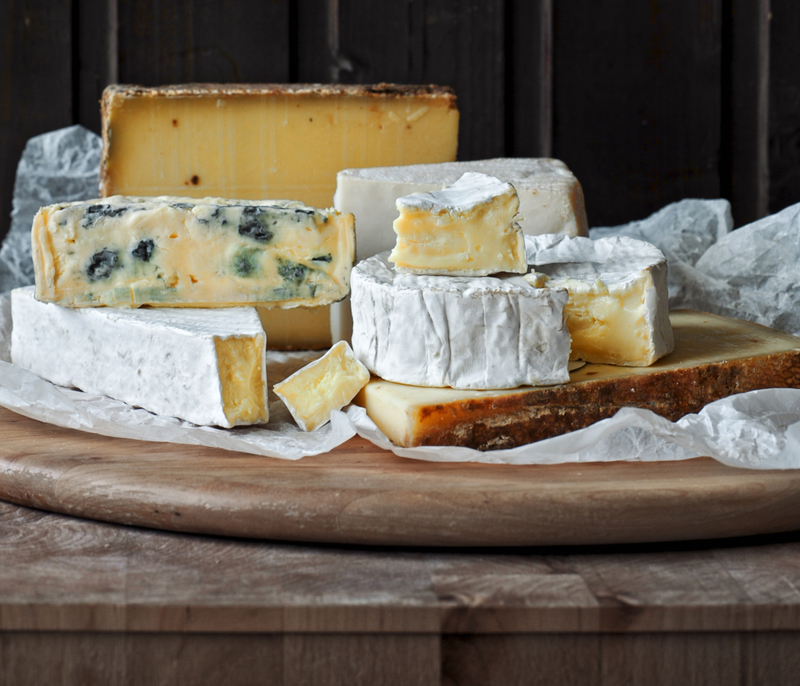
The CDC warns that cheese that is made with raw milk, as opposed to pasteurized milk, is 50 to 160 times more likely to cause a Listeria outbreak. To be fully pasteurized, milk should be heated to 161 F, for at least fifteen seconds. Alternately, it can be heated to 145 F for at least 30 minutes.
A To-Go Box Leaves Your Food Out For Too Long
If you’re not heading straight home, you probably do not want to take your leftovers to-go. The temperature of the food needs to stay cold, as in the refrigerator, or remain hot, over 140 degrees F. If not, your meal may be harboring bacteria by the time you eat the rest of it.

The guideline is to toss any leftovers that have been at room temperature for over two hours. If not, potentially deadly pathogens can thrive. Another guideline, according to the FDA, is that leftovers should be consumed in no less than four days.
Beware of Kobe Beef Knockoffs
Kobe beef is a select variety of meat that is known for having the highest quality and the best flavor. The distinctive marbling endows it with a buttery, tender texture and superb characteristics. The high cost of this delicacy is also attributed to rare farming, it comes all the way from Japan. Its unique quality leaves it up for imitation. Due to dubious labeling practices, cheaper offerings of Kobe beef might not be legitimate.

In fact, it is very unlikely you will be served actual Kobe beef since the U.S. banned its sale in 2001 with the mad cow outbreak, and never released the ban. It may take a trip to Japan to tastes a true Kobe.
Sweet Tea is Sweeter Than You Think
Southern sweet tea is a summer staple, a down-south tradition. Made with black tea, vats of sugar, and served with plenty of ice, it’s easy to drink yourself into a diabetic seizure. Sweet tea delivers 25 grams of sugar per glass. A 23-ounce can of Arizona Tea packs 69 grams of sugars. Tea, itself, can be good for you.
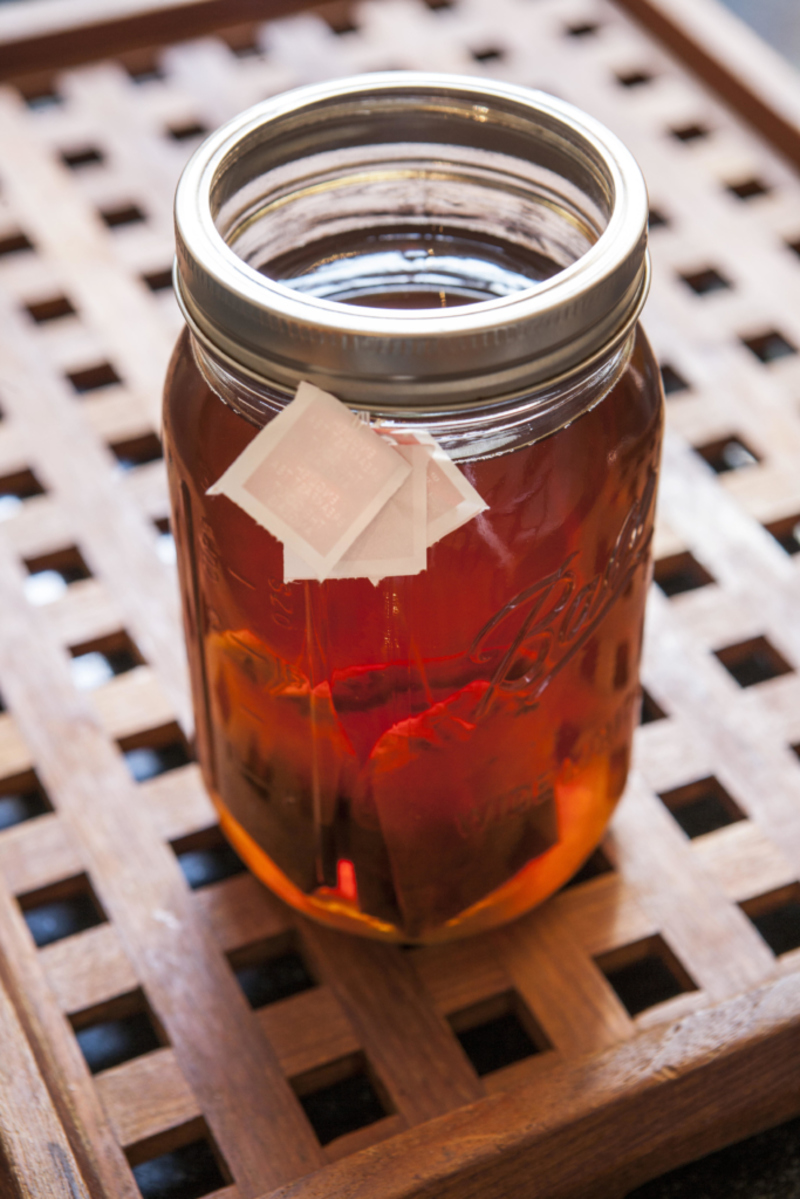
Black tea contains natural antioxidants. But the high sugar content makes it a health risk. Some people order sweet tea as an alternative to soda. The reality is, iced tea can contain more sugar than a Coke.
Think Twice About Ordering the Daily Special
Here’s a little-known fact most people have never heard of. Restaurants repurpose leftovers to enhance their daily menu. The ‘special du jour’ may incorporate the bad sellers of the previous day to cut down on waste. Extra bread might become croutons or bread pudding the next day.
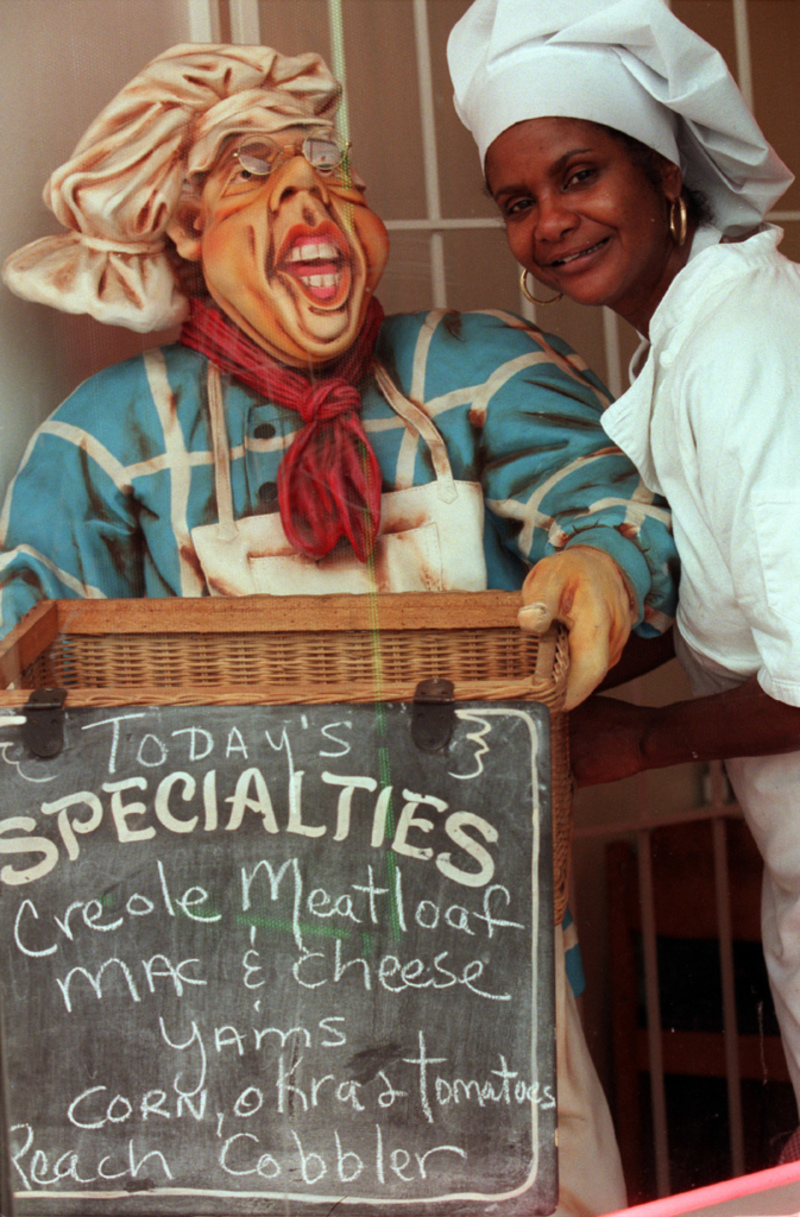
Alternatively, surplus pasta from the night before can become pasta salad on the daily menu. Not all food is used for specials, to be sure. Eat This, Not That! estimates that U.S. restaurants waste 11.4 million tons of food each year. That’s a lot. Restaurants often donate excess food or simply dispose of it.
Should You Order a Medium Rare Burger?
Short answer: no. Never. Hamburgers should not be ordered medium-rare. Whereas steaks are fine to enjoy cooked rare, ground beef is totally different. Bacteria or germs can lurk anywhere inside ground meat, but on a steak, pathogens only exist on the surface, which is then seared at temperatures high enough to kill them.
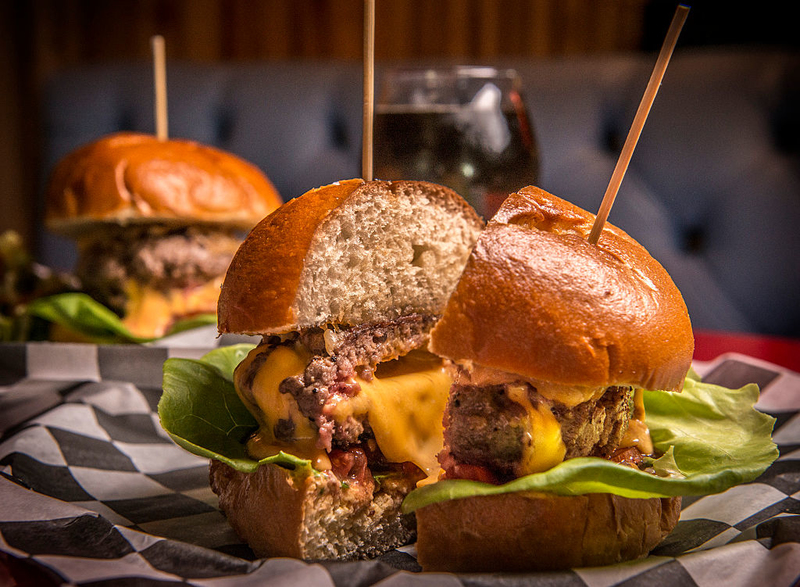
Hamburger meat has come in contact with many surfaces on its way to the bun on your plate, so failing to cook the inside of the burger to an internal heat of 155 degrees F, which is considered medium, can lead to an unpleasant bout of food poisoning. Order your burger medium or medium-well.
The Vegetarian Misnomer
How sure can you be that a vegan or vegetarian menu item is a fully plant-based meal? Unfortunately, there is no way to know. A random survey by Food Network found that 15 percent of chefs admitted that some animal products likely exist in vegetarian plates
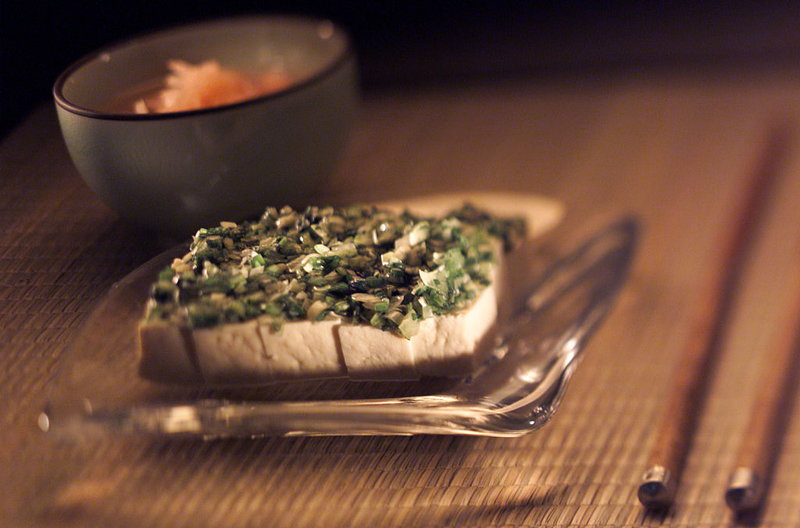
To make sure you are eating a plant-based meal, try asking the server about the ingredients. Another option is to special order a menu item without certain ingredients that may have inadvertently snuck in. Also, it’s best to frequent restaurants that specialize in vegan and vegetarian foods.
Check Out the Restrooms Before Dining
One good rule of thumb suggests surveying the bathroom facility before deciding whether or not to get a table. If the restrooms are a mess, just imagine how the kitchen is.

If they don’t take care to keep the bathrooms clean, you can be sure they don’t prioritize other sanitary efforts.
E. Coli Can and Will Contaminate Flour
Raw dough, whether pizza dough or cookie dough, can be laced with E. coli, as well as Salmonella. In fact, in 2019 General Mills recalled 600,000 pounds of Gold Medal flour for E. coli contamination. A deadly strain of the bacteria was discovered in its Kansas City facility during random testing of samples.
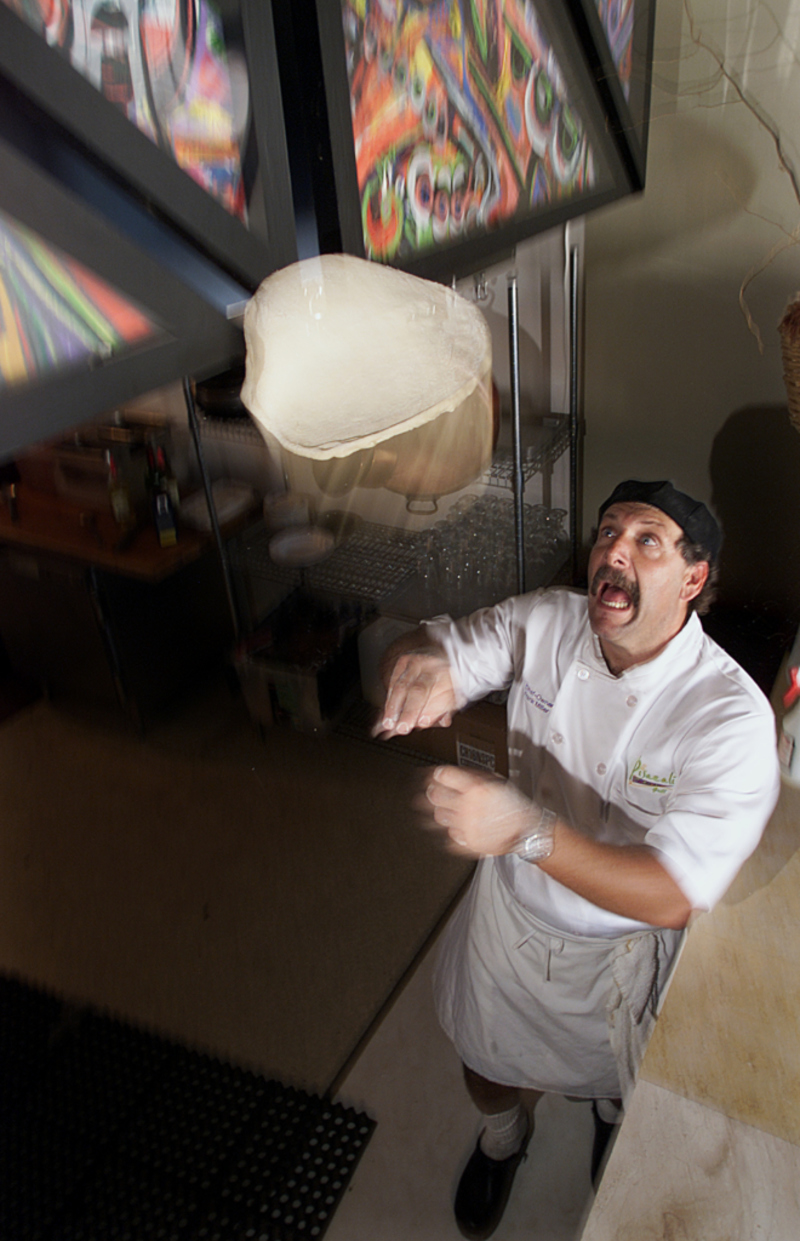
Baking the dough to 160 degrees F or hotter is sufficient to kill the bacteria. It’s best to wash hands before handling the dough and make sure prep surfaces are clean.
Is Custom Ordering a Good Idea?
In general, requesting menu alterations is not advised. Chef Christopher Faulkner explained to Delish that unless the customer is allergic to something, they should never substitute one ingredient for another.

The idea is that the diner is not as skilled as the chef and that concocting a new menu item will usually be less tasty and less satisfying. The chef knows what he’s doing. Also, any alterations can cause confusion in the kitchen. The chance of you receiving what you ordered is lower with each change you request. Keep it simple.
Don’t Order Your House Specials
Ordering a version of your homemade family favorite is going to be a letdown. Rye McKinney CEO Tanner Agar suggests choosing meals that require high tech equipment or skills to make.

In short, for the best gastronomic experience, you should order foods that you can’t make at home.
Luxury Items
If you don’t want to get ripped off, there are some menu items that should be avoided. Luxury foods like caviar, white truffles, and Kobe beef, for instance, may not have the quality of the value. Since everyone is aware that such foods are delicacies, the restaurant knows it can mark them up to any price.

The rare value, and the fact that you usually don’t prepare them at home, makes it easy for restaurants to turn a profit. But the reality is, you can make these delicacies at home, and it’s much easier than you think. You will save a bundle too.
Don’t Get Gouged on Valentine’s Day
Going out on Valentine’s day is a rip-off. Crowded kitchens, busy staff, and overflowing dining rooms mean your meal is going to be unsatisfying. Chefs are the first to say this. Gordon Ramsey explained to Town & Country that you can’t get a feel for a restaurant when it’s just too busy.
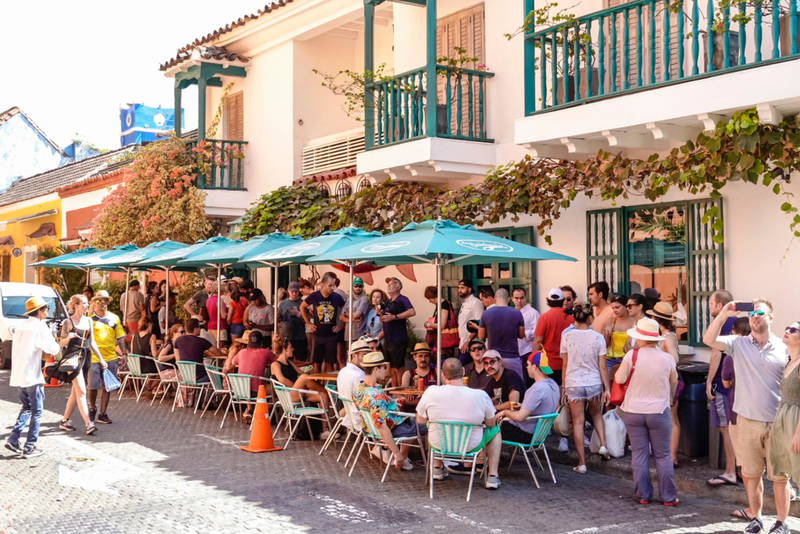
Chef Ramsey suggests that we all cook at home on Valentine’s Day. Truthfully, there is nothing more romantic than a bottle of wine and a home-cooked meal.
A Well-Done Steak
Why Bother? Beef jerky is a lot less expensive and tastes pretty much the same. Ordering a steak well-done is essentially asking for a meal with all of the flavor cooked out of it. Food poisoning is no joke, but medium or medium-rare is sufficient.
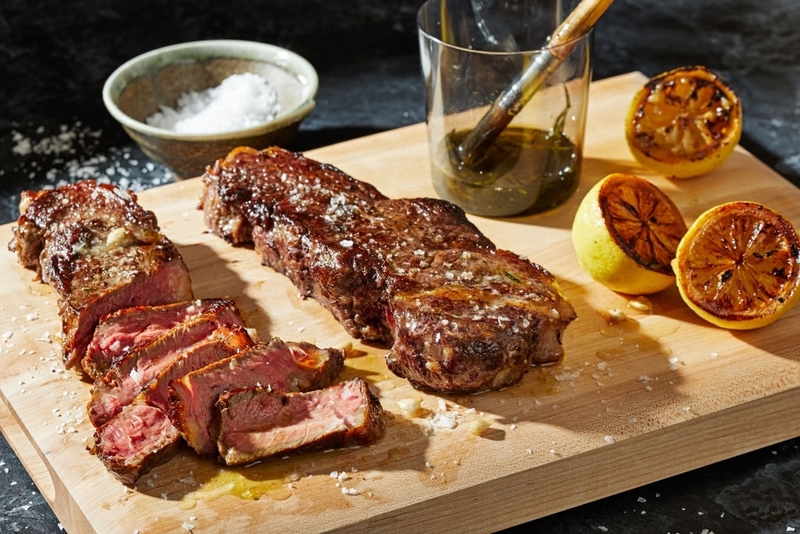
Chefs agree. One chef known as Chef Geoff sparked a red hot Reddit meme. when basically stating that anyone who has the audacity to order a steak well done, should be promptly asked to leave.
Watch Out for Diet Cocktails
It turns out that people imbibing in diet cocktails consume more alcohol than other drinkers. One study found that people who consumed bar drinks made with diet soda tested at a blood-alcohol level that was 25 percent higher than those who drank standard cocktails.

Plus, folks tend to order more and eat more when they drink diet mixed drinks.
Value Combo Meals Aren’t Worth It
You’ve heard it a million times. ‘Get fries and a drink with that for just a buck more.’ You’re at the register trying to make a quick decision. You’re thinking, ‘more is better,’ and, ‘I don’t have to eat all the fries.’ The pressure is mounting.

By the time you decide to go with the combo meal, you’ve agreed, essentially, to pack on enough calories to get you halfway through tomorrow. It’s true! A study by the Journal of Marketing Research found that diners will eat 85 percent more than they had originally planned, just by taking the bump-up offer.
A Slice of Lemon
Some restaurants offer a slice of lemon with a glass of water. The only problem is, according to a study in the Journal of Environmental Health, 70 percent of lemons tested positive for bacteria. The study discovered that bacteria is passed to lemons and other garnishes by food servers or food preparers’ hands.

Like most garnishes, lemons often are handled with bare hands, sometimes even while they are sliced. While a bartender who is being watched may be more likely to wash their hands, a waiter who is rushing through the kitchen may not feel the same way.
Cocktail Garnishes
Bartenders are not held to the health code standards of restaurants. Bartenders serve drinks, not food, after all. A study at Clemson University by food scientists Paul Dawson and Wesam Al-Jeddawi took a close look at bar drink garnishes.
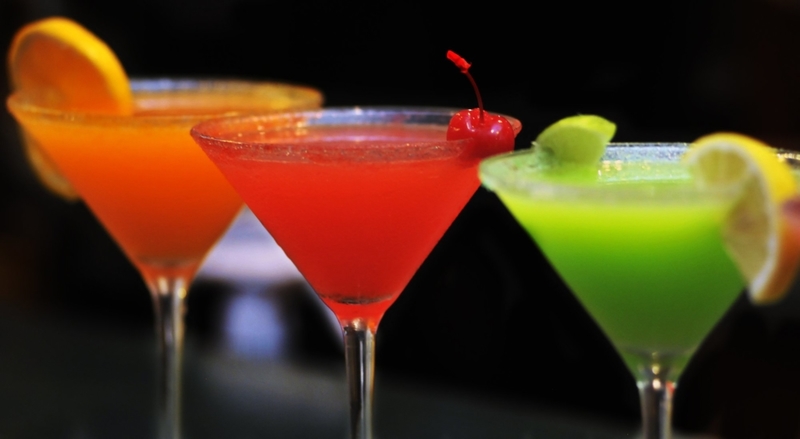
What they found is wet lemons absorbed bacteria 100 percent of the time, but dry lemons absorb harmful microorganisms 30 percent of the time. Another surprising finding was that 83 percent of ice in cups harbor bacteria. Just one more reason to go sober.
All You Can Eat Spaghetti
The all-you-can-eat pasta option is tempting but paying for a single serving is a better decision. Pasta is cheap, so restaurants turn a quick profit by serving up a never-ending bowl of noodles. Nutrition recommendations say we should consume only six to eight ounces of pasta per day. That is equivalent to one cup, a very small amount compared to the mounds offered at restaurants.

Extra carbs are stored as sugar. Eating too much pasta has been linked to an increased risk of heart disease, high blood sugar and resistance to insulin. Eating too much pasta can blow an entire day of calories on just one meal.
Free Refills
Just one serving of soda contains over 37 grams of sugar. As it turns out, the American Heart Association recommends no more than 37.5 grams of sugar per day. By choosing the free refill option, you can triple your daily sugar allowances at one meal. Order water.

Sodas contain zero nutritional value and are less refreshing than water. Have dessert instead. A soda lifestyle leads to obesity, type 2 diabetes, and other health issues.
Chips and Salsa
One of the most tempting snacks ever placed on the center of any table is a basket of warm, freshly fried tortilla chips served with a bowl of authentic house salsa. It’s virtually irresistible. But, stop. Just ten tortilla chips take you back 150 calories for the day, this according to the Livestrong foundation.
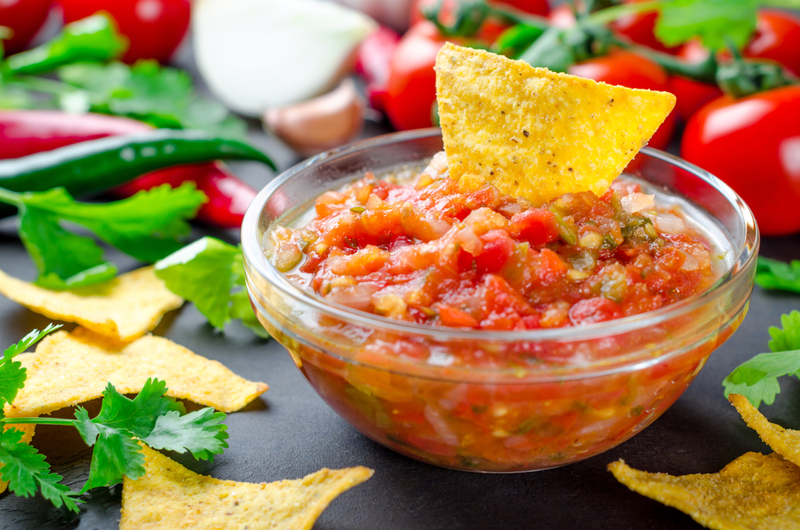
Salsa is nutritious and low in calories with only 5 calories per tablespoon, but it’s those chips that’s the problem. Limit your chip consumption and save the calories for the meal, which you know is going to be a generous load of fat and calories.
‘Do You Like Piña Coladas?’
“Getting caught in the rain?” If so, limit yourself to one. One piña colada actually counts as two drinks according to the NIH cocktail content calculator. The way they measure, it’s twice the calories and twice the fat. A piña colada has a whopping 68 grams of sugar. It puts Coca-Cola to shame. You can have dessert instead of piña colada and come out the same in fat and calories.

What makes it so decadent? A half-cup of diced frozen pineapple, two ounces of pineapple juice, two ounces of Colo Lopez coconut cream, one-and-a-half ounces of white rum and one ounce of dark rum. Blend.
Just Say ‘No’ to Shark
Keep sharks off the endangered species list. Besides, shark meat is loaded in toxins you do not want to eat. High levels of mercury, arsenic, and lead were found in Great white sharks off the coast of South Africa by a study from Science Daily.
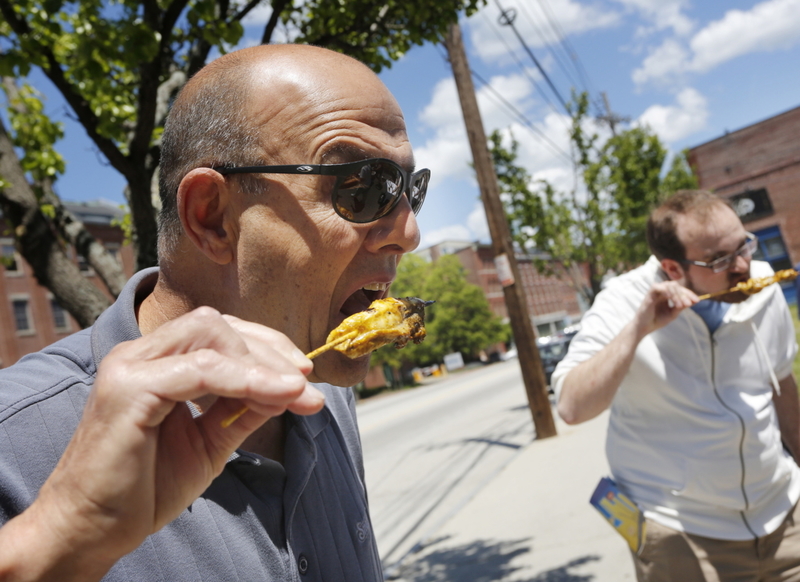
Bottom feeders that clean up the ocean floor of toxins like mercury are gobbled up by sharks. We become the top predator by consuming shark meat, and all those toxins contaminate our bodies.
Cheese Fries Look Like a Heart Attack in a Bowl
Truth be told, it’s the sodium content that is a hidden threat. This irresistible mound of fries slathered in cheese can contain up to 780 calories, half of which come from fat. It has 88 grams of carbs and 35 mg of cholesterol. Yet, the sodium levels are off the charts with 1330 mg of salt. That means cheese fries are 56 percent salt.

Too much sodium, actually sodium chloride, causes high blood pressure. Hypertension affects one out of three people in the U.S. Excess sodium intake will also put you at risk for stroke, heart failure, osteoporosis, stomach cancer, and kidney disease, which can lead to kidney failure.
Creamy Soups
Another food that packs a high sodium punch is cream-based soup. Just one serving offers half the daily recommendation of sodium intake. Tracy Lesht, an NYC says to stay away from ingredients like “cream of, chowder,” and “bisque.”

Lesht encourages people to opt for broths and vegetable-based soups. These are generally healthier because they contain less fat and cream.
Breakfast Should Not Be the Unhealthiest Meal of the Day
Pancakes and eggs, separately, are not an entirely unhealthy breakfast choice. It is the bacon, sausage, syrup, cheese, and butter that pack on the fat and calories. On average, we should consume about 300 to 400 calories at breakfast.
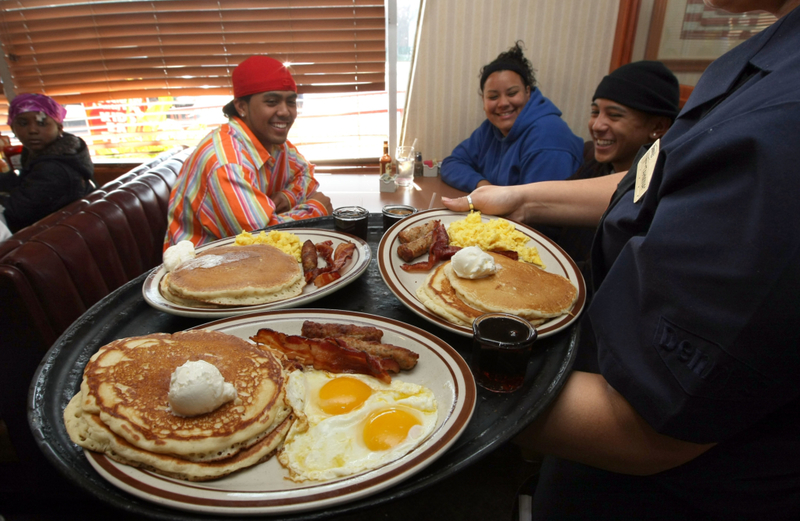
Going out to eat for breakfast makes that goal literally impossible. The “classic skillet” breakfast at IHOP, for example, has 1,800 calories! It’s eggs, potatoes, and pancakes and a side of bacon or sausage. And then we pour syrup over it. It’s like consuming the entire day’s calories first thing in the morning.
Buffalo Chicken Salad
No one chooses something from the salad menu expecting to consume 1,000 calories. But that is exactly what you get when you order the Boneless Buffalo Chicken Salad at Chili’s. This salad contains 970 calories and 66 grams of fat.
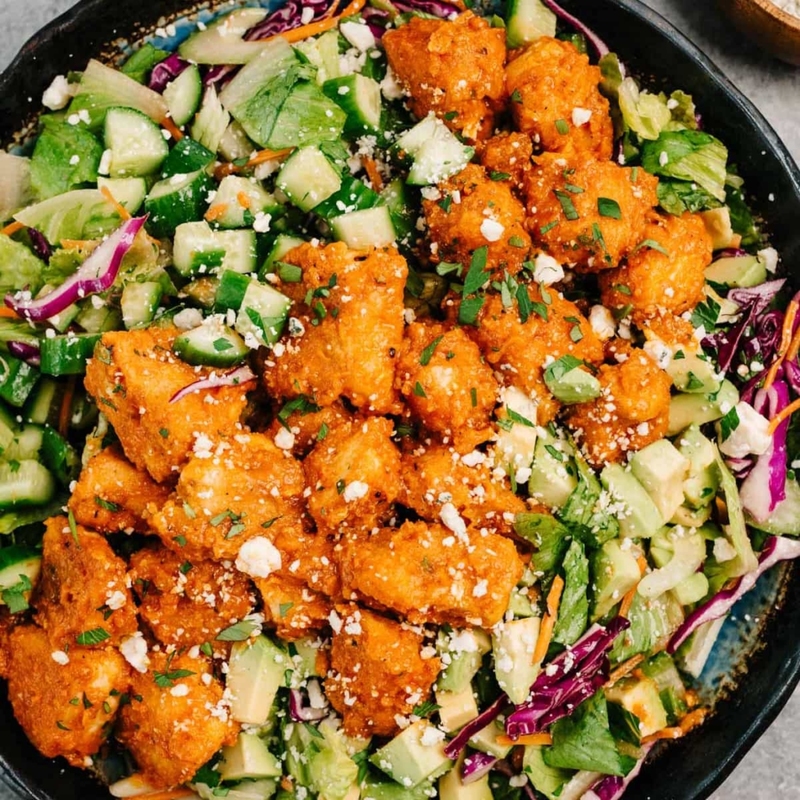
A person who orders a salad because they are watching their weight is not looking for a meal that contains half a day’s calories.
Not All Syrup is Equal
Pure maple syrup, tapped from the tree, offers one of the best sources of sweetness—all-natural, no preservatives added. The “maple” syrup one finds sitting on the tables at restaurants, however, should be avoided. Ingredients include high fructose corn syrup and caramel coloring. If that sounds harmless enough, it’s not.
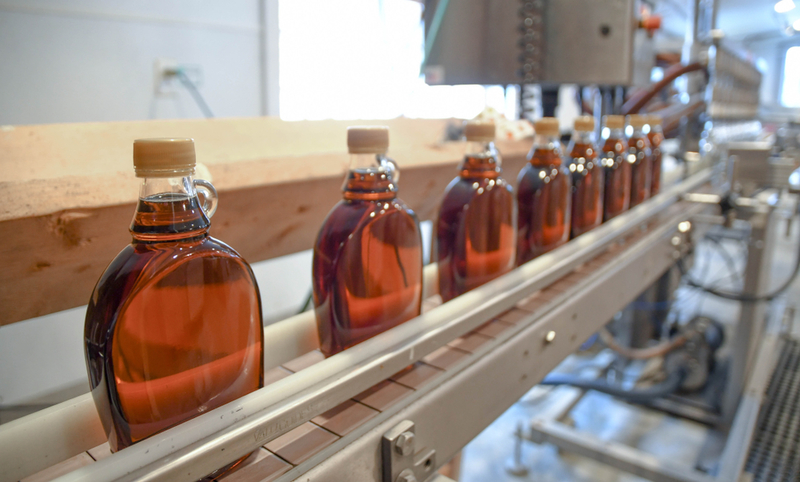
Caramel coloring is a possible source of carcinogen 4MEI, which forms during manufacturing. And what’s so wrong with high fructose corn syrup? It can cause liver damage. Specifically, consuming too much of this syrup increases fat on the liver, resulting in fatty liver disease.
Escolar
Avoid this fish like the plague. It causes such severe gastrointestinal mayhem that both Italy and Japan have banned the sale of it. Sometimes called butterfish, walu and oilfish, this relatively novel tuna variety has a rich and buttery texture, making it more and more commonly found on restaurant menus. With many fish species susceptible to overfishing, escolar is widely available.
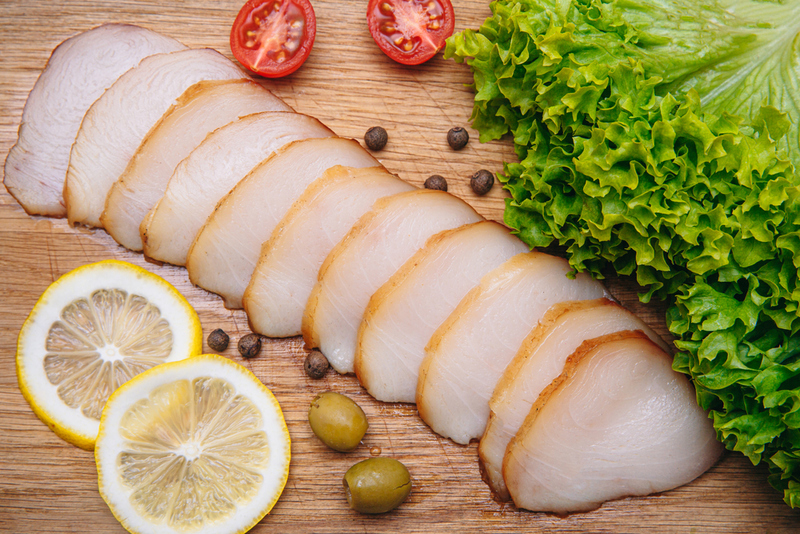
The attribute that gives this fish its buttery flakes is the same that cause problems. It contains esters called “gempylotoxin,” and these oils can trigger diarrhea—but not just any diarrhea. The Kitchn, prefaced with an apology, says, it “causes explosive, oily, orange diarrhea.” The good news is that escolar is nontoxic, but it has caused plenty of people a very messy and humiliating experience. It is advised that one consumes six ounces or less.
Salads Are Only Good for You Until They’re Not
Not only are salads overpriced, but the pile of leafy greens that are magnificently heaped upon your plate may also be harboring bacteria. In 2018 and 2019, over 370 people were sickened by romaine contaminated with E. coli.
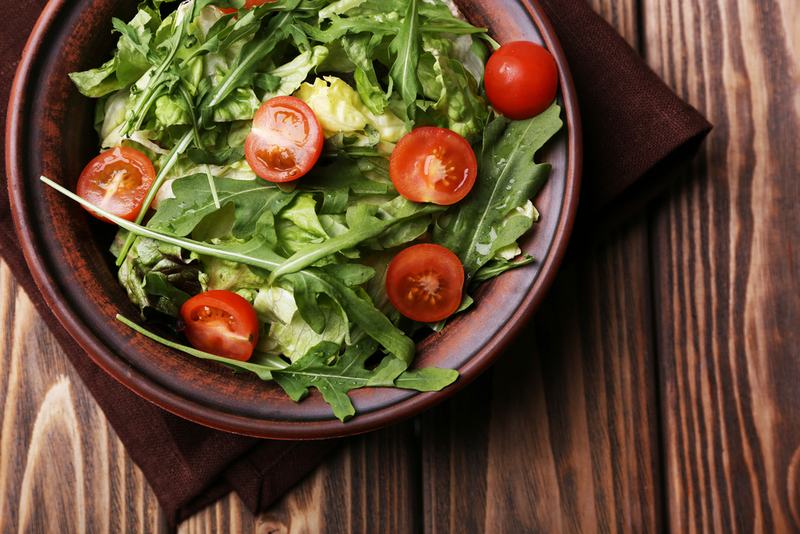
Food safety expert Ben Chapman, a PhD. From North Carolina State University told Consumer Reports, “There are many opportunities along the continuum—from seed all the way to a consumer’s plate—for greens to become contaminated.” And, unfortunately, it is restaurants where proper washing of the greens may not be as thorough as expected.
Turkey Burgers
Turkey burgers, made with ground turkey, are served with a possible double whammy of bacterial infection. In 2013, a conclusive study found overwhelmingly that as much as 69 percent of samples showed traces of enterococcus. The study, by Consumer Reports, found 90 percent of samples were positive for one of five common food bacteria.
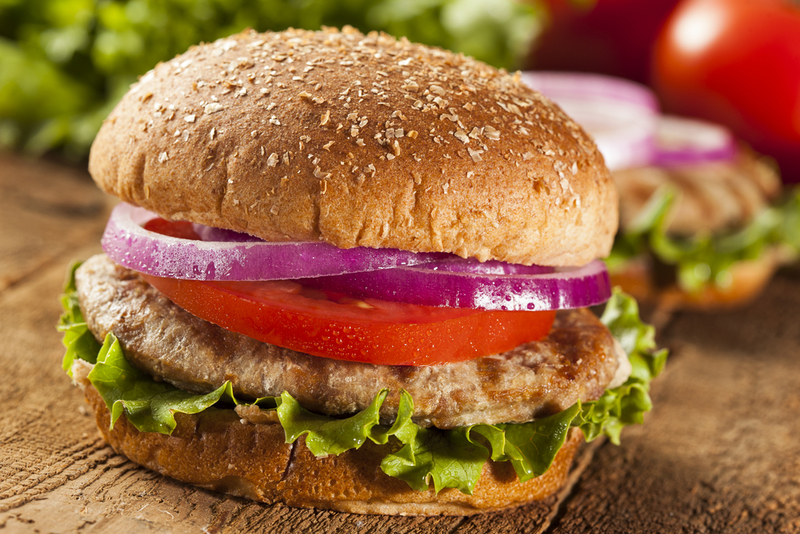
It is bad enough that the meat is so prone to contamination, but what makes it twice as bad is that the antibiotics that the birds are injected with at turkey farms are responsible for making it more difficult to get well from a turkey burger food poisoning. Healing from the illness can take a long time because, in part, multiple antibiotics may be required.
The Sweet Jalebi
The jalebi is one of the yummiest menu items at any Indian food restaurant, but it is also a really bad choice. Just to put it in perspective, it made Huffington Post’s 10 Most Fattening Foods in the World list. What does it take to be one of the world’s most unhealthy foods? A jalebi is a deep-fried dough, to start, making it as fattening as a funnel cake, but it doesn’t stop there.
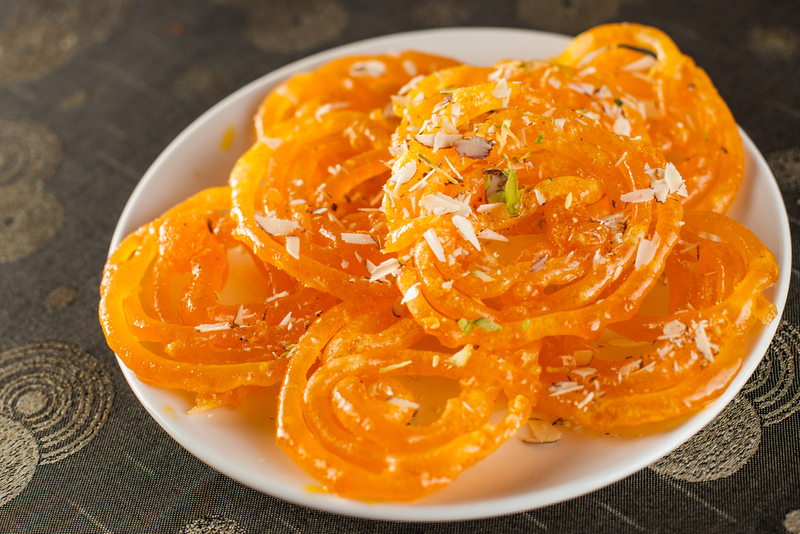
The dough is then slathered in saffron syrup. Devouring just one of these dainty delicacies puts you back more than 300 calories for the day, and who can eat just one?
Vindaloo: The Spiciest Food on the Planet
Another Indian food that should have a red flag warning is Vindaloo. The name comes from a variety of saffron, the spiciest saffron known to man. The vindaloo is made spicier by adding chili powder. All in all, it is one of the fieriest foods available.
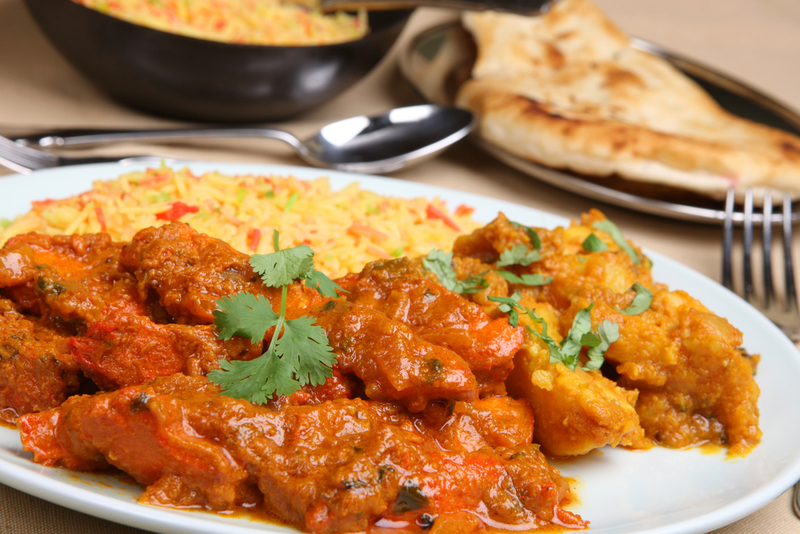
Traditionally, it comes in beef, pork, or lamb and is copiously covered with garlic, pepper, ginger, and, of course, the vindaloo curry. While the curry contains many health benefits, like turmeric, the spice has been known to trigger a rare allergy resulting in an anaphylactic reaction that may need hospitalization. In short, vindaloo is one fiery food.
Some Veggie Burgers Contain Zero Veggies
Although the name sounds healthy, a veggie burger may not be all that. These alternative patties generally contain inadequate protein and come packed with high-caloric fillers. Veggie burgers loaded with beans, nuts, soy or other high-protein foods do make a nutritious meal, but those all-carb patties are really not worth it.
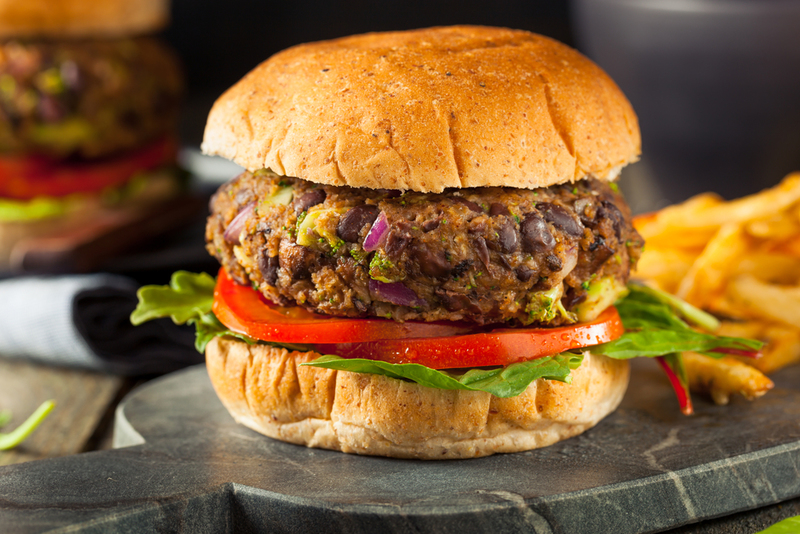
Especially avoid veggie burgers loaded with ingredients such as methylcellulose, maltodextrin, or very unfamiliar-sounding names. Read it Before You Eat It author Bonnie Taub-Dix told Insider, “not all veggie burgers are alike,” emphasizing that you should ask your server for a list of ingredients.
Carbonara: Cardiac Arrest on a Plate
Carbonara is a sauce popularly served on pasta. If you thought a heaping bowl of carbs was devoid of nutrition, carbonara drenches it with over 500 calories of creamy extravagance. The delicacy is made of heavy cream, eggs, cheese, and bacon. The pasta carbonara entrée at the Cheesecake Factory delivers an astonishing 2,340 calories to your place setting.
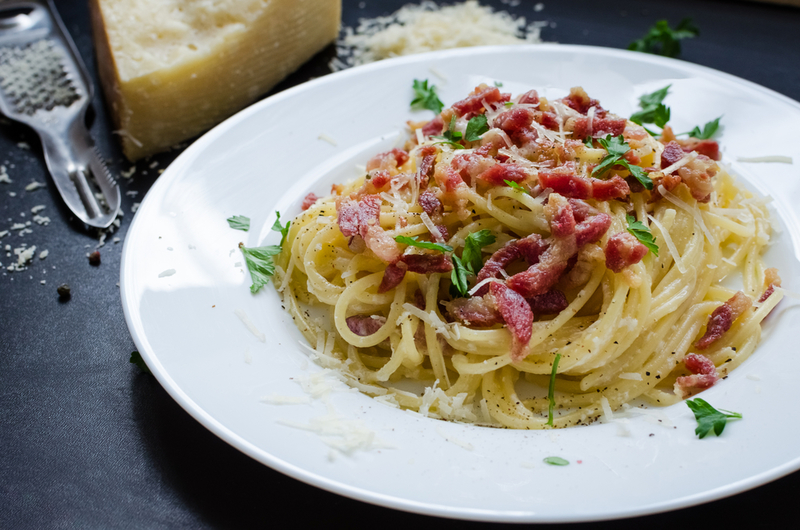
Packed with 145 grams of fat, this meal contains more calories than our daily requirement. You won’t go away hungry! But consuming this meal consistently is one way to bring about the demise of your cardiovascular system.
Milkshakes
If you’re not careful, you may hit your daily calorie requirement before your food even arrives, with just a beverage. At Sonic, a large Oreo cheesecake shake is laden with 1,470 calories! And while a small shake at In-n-Out will only run you about 580 calories, that caloric intake represents what a nutritious meal might contain.
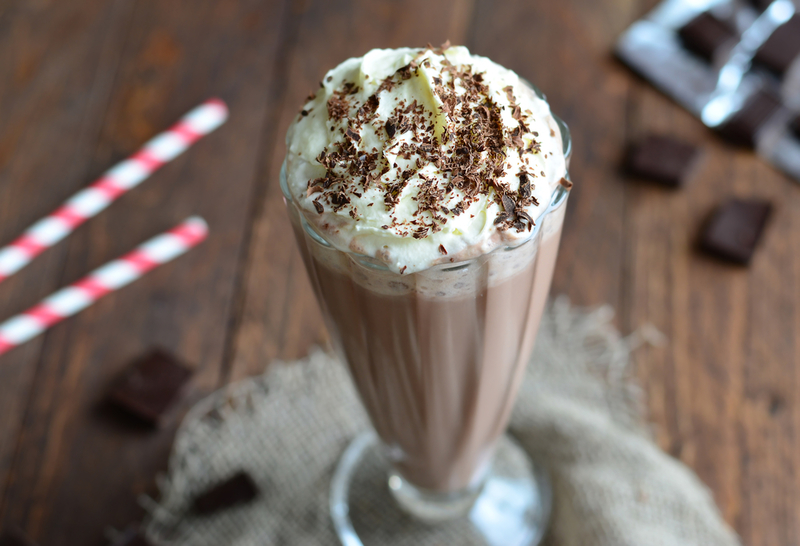
To put it in perspective, a double cheeseburger at Sonic contains 570 calories. Yet calories are only half the problem. Of the 1,470 calories in the Sonic shake, 650 come from fat. To top it off, the decadent beverage has 119 grams of sugar.
Energy Drinks
Despite the fact that energy drinks are marketed as a healthy alternative to soda and contain natural herbal extracts, the reality is these beverages contain loads of harmful ingredients as well. You’ll find glucose, sucrose, and heavy doses of caffeine. Consuming a single can causes blood sugars to soar.
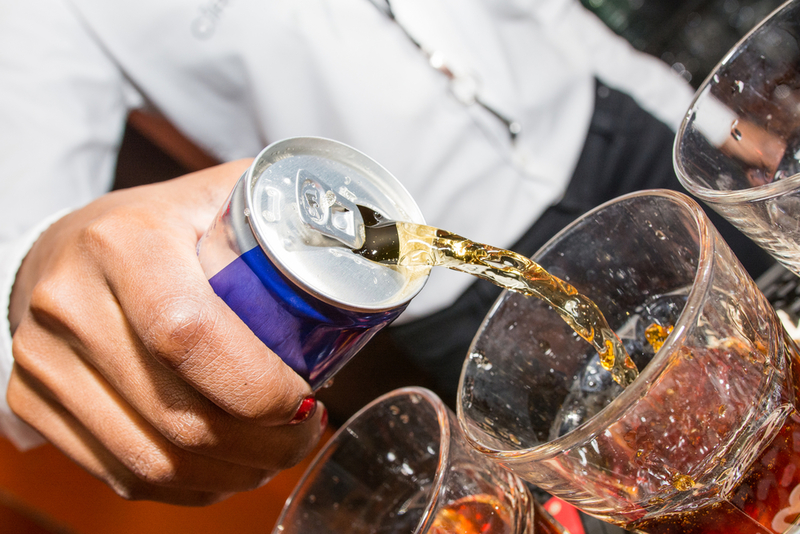
Worse yet, a new trend mixes in alcohol. It’s wildly popular, but it’s also extremely dangerous. One problem is that people consume much more alcohol. Deaths and other medical problems triggered the FDA to force companies to remove stimulants from cocktails.
Potato Chips
Crunchy, salty, and tasty, potato chips are ideal snack food. Unfortunately, these divinations are deep fried in trans fats. Trans fats come about during processing vegetable oil, called hydrogenation, to increase its shelf life. But, consumed by humans, the outtake causes high LDL cholesterol and all the baddies that come with it: obesity, coronary heart disease, high blood pressure, diabetes, and even cancer.
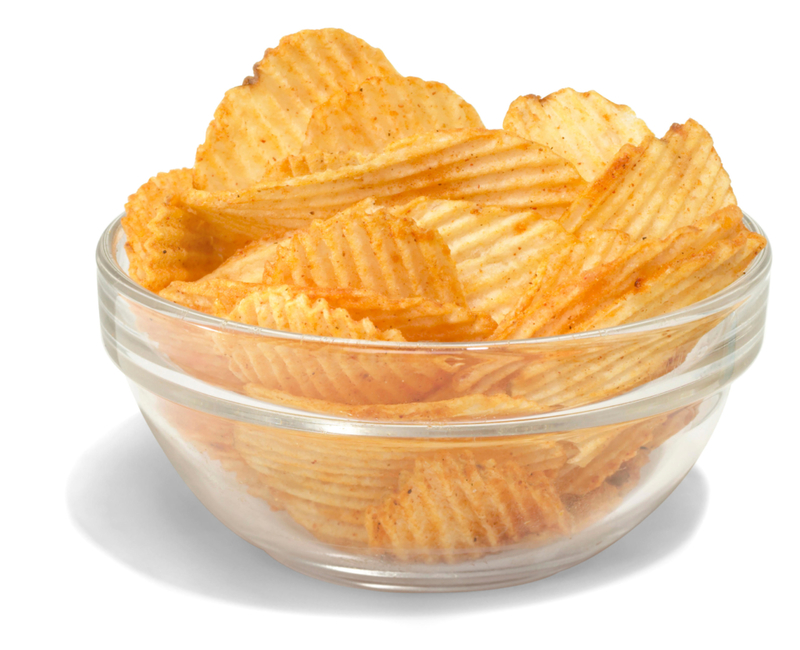
There is virtually no nutritional value left in the potato chip by the time it’s processed. So, those 154 calories by eating less than 20 chips are empty, save for sodium and fat
Fried Wontons
It’s tempting to go for the fried wontons. You arrive at the restaurant half-famished, and these sumptuous treats are less pricey and more tempting than other appetizer options. But wait! If you eat just a few, you’ve already consumed enough to constitute a dinner, and the requisite sweet and sour dipping sauce only makes them an even more unhealthy dish.
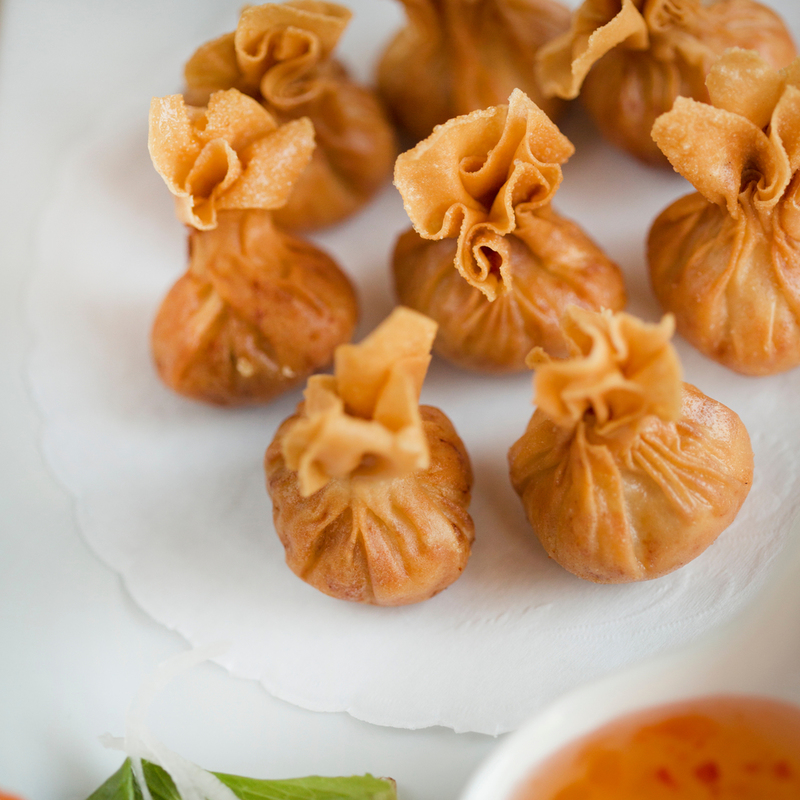
Stuffed with cream cheese and imitation crab or shrimp, in general, each is also packed with over one hundred calories and 19 grams of fat. Perhaps a fresh vegetable spring roll will better tide you over.
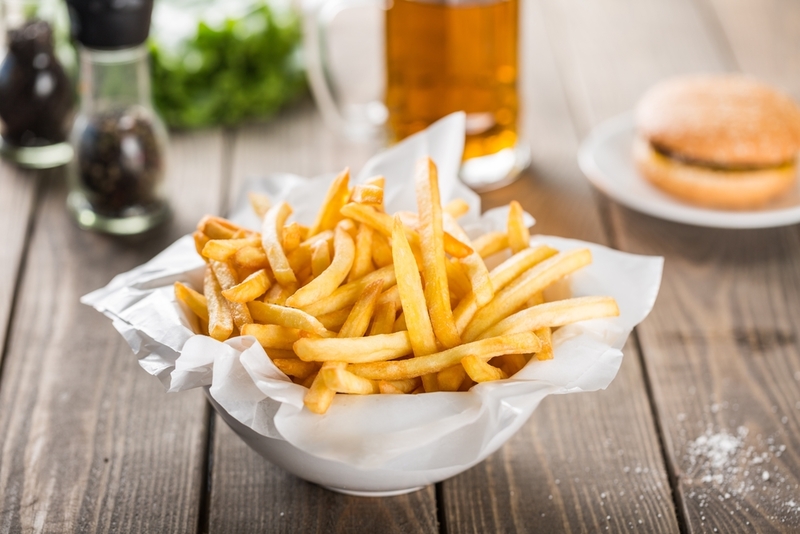
What’s acrylamide? The substance is formed by high-heat reactions while cooking starchy foods. The EPA says it is “likely to be carcinogenic to humans.”
Be Wary of the Gravy
Pouring on the gravy is easy to do. Everything tastes better slathered in this flavorful sauce. Thanksgiving dinner would cease to exist without gravy. However, at restaurants, you might be advised to order a meal that doesn’t come with gravy. Especially, this is true at the buffet counter.
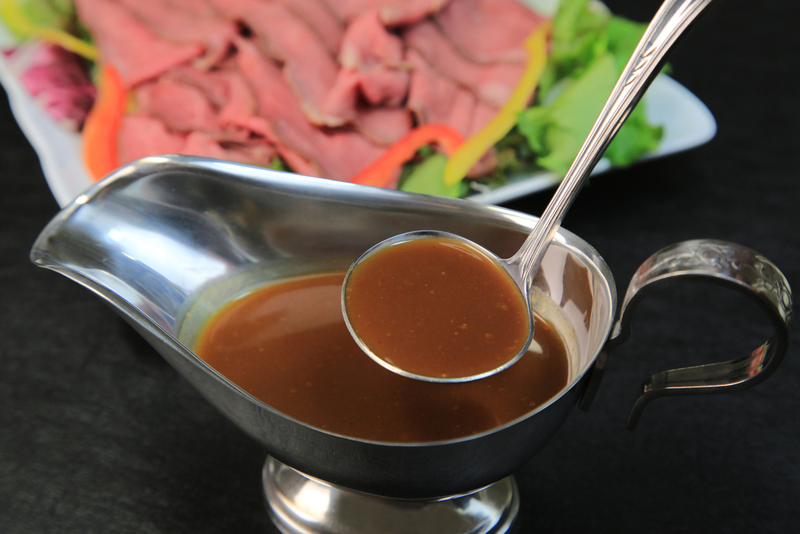
If gravy sits out too long at an inadequate temperature, below 140 F, Clostridium perfringens, bacteria that cause food poisoning, grows. The foodborne illness is unpleasant, with cramps and diarrhea lasting about 24 hours, but it can be fatal. It’s fairly common and is responsible for about 1 million cases per year. Hold the gravy.
Sandwiches
Sandwiches are one type of food that can harbor Staphylococcus aureus, or a “staph” infection. If you contract the infection, you will know it right away. Severe symptoms of nausea, vomiting, cramps and diarrhea can strike in 30 minutes.
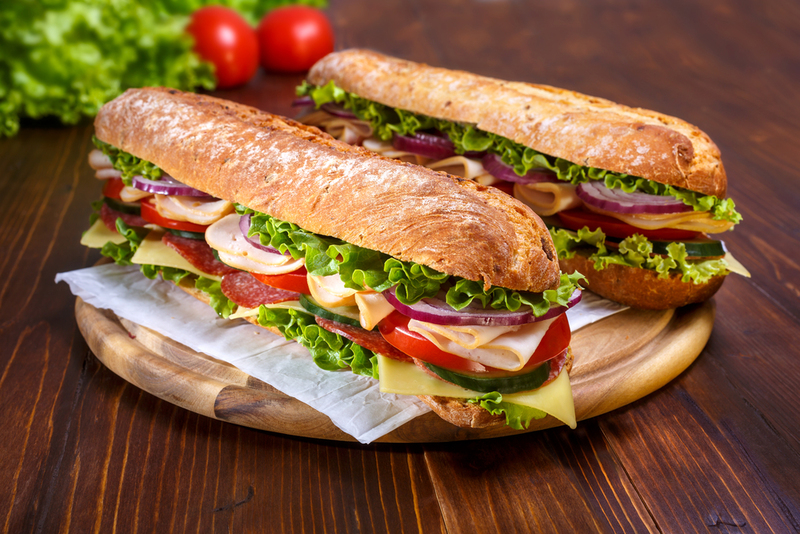
It’s not uncommon for the symptoms, which last about one day, to hit you within six hours of consuming the tainted food. Sandwiches, as well as cheese products, salty foods like ham, eclairs and pastries, and mixed salads like tuna, potato and macaroni, are also common to staph. The reason is that the person preparing your food likely had an infection on their hand.
Always Look for Fully Cooked Chicken
A single drop from raw chicken can infect an unsuspecting diner. The Campylobacter bacteria lurks in uncooked chicken and other foods. The most common outbreaks, however, have occurred in poultry. According to the CDC, 24 percent of Campylobacter cases originate in chicken.
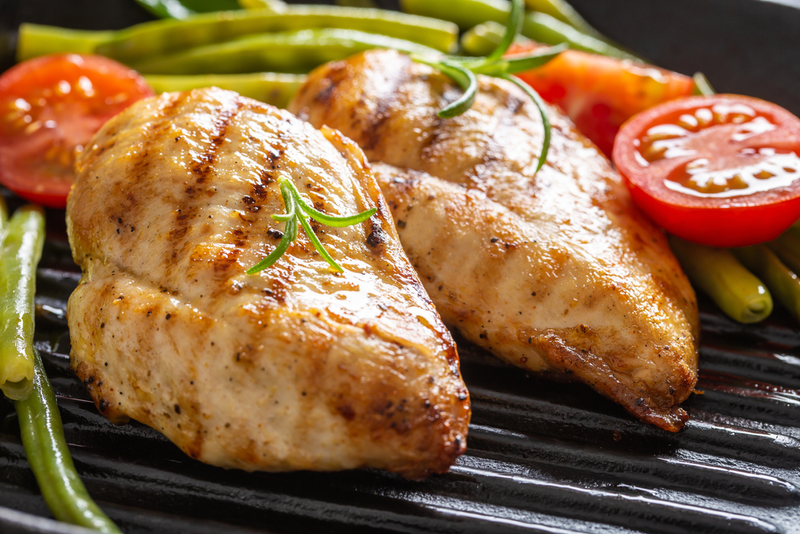
How do you know you’ve ingested the pathogen? Symptoms like bloody diarrhea, fever, cramps, and vomiting, last about a week and usually come on two to five days after consuming the meal. In cancer patients and those with AIDS, the infection can be deadly.
What’s Hiding in Those Free Bar Munchies?
Some restaurant bars offer complimentary snacks. Salty crunchies offered with cocktails may seem like a lucky break that hits the spot, especially if you’ve come to the bar famished. Bowls of nuts, pretzels, or chips are a perfect match with a beer, however, think about how many people’s hands have dug in.
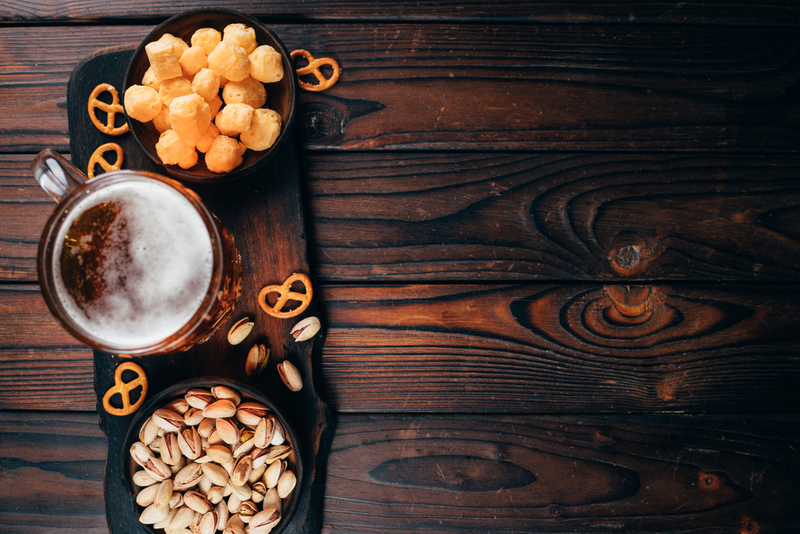
And, think about how many pathogens might have been left behind. You might want to save the calories and shun gratuitous germs.
81 thoughts on “Menu Items You Should Definitely Avoid”
Leave a Reply
You must be logged in to post a comment.
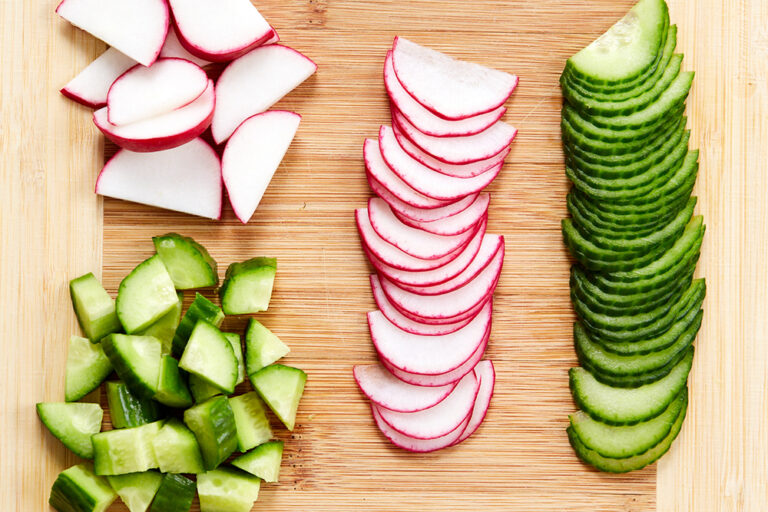
Why Should You Eat More Radishes?

Trees Use Forest-Wide Communication Networks

What Do Your Cat’s Noises Mean?

Cats May Recognize Their Own Names According to Science

Can Pets Understand What We Are Saying?

More Beautiful Abandoned Places
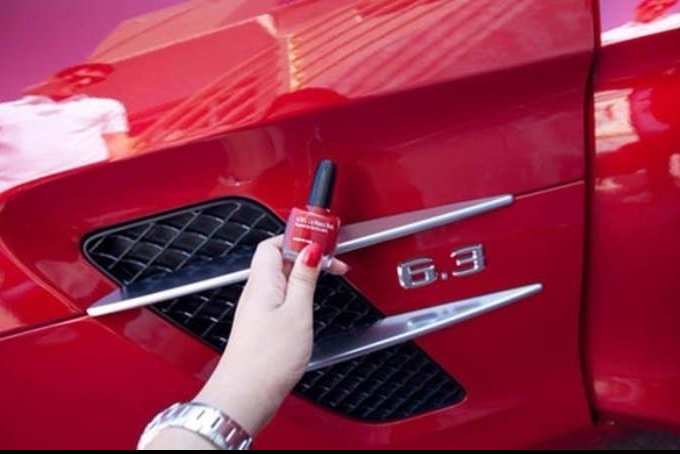
Secret Car Cleaning Hacks Revealed
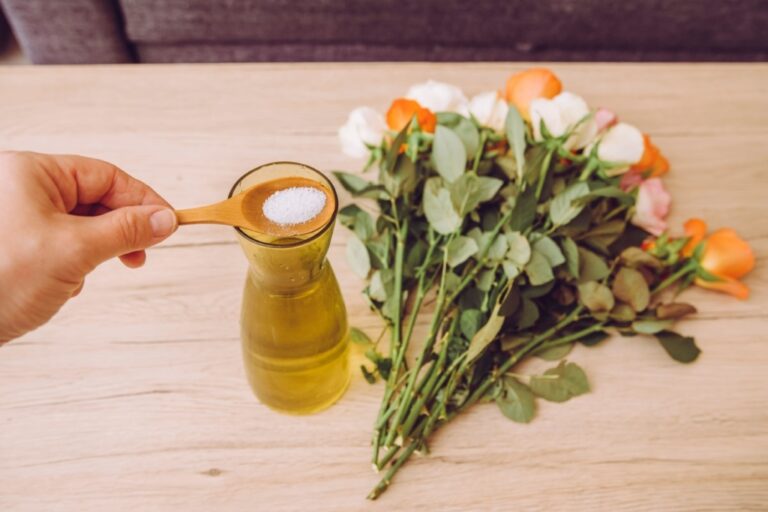
Unexpected Salt Hacks You Need To Know

The Worst Schools in the U.S Part 2

Vintage Old Toys With Insane Value

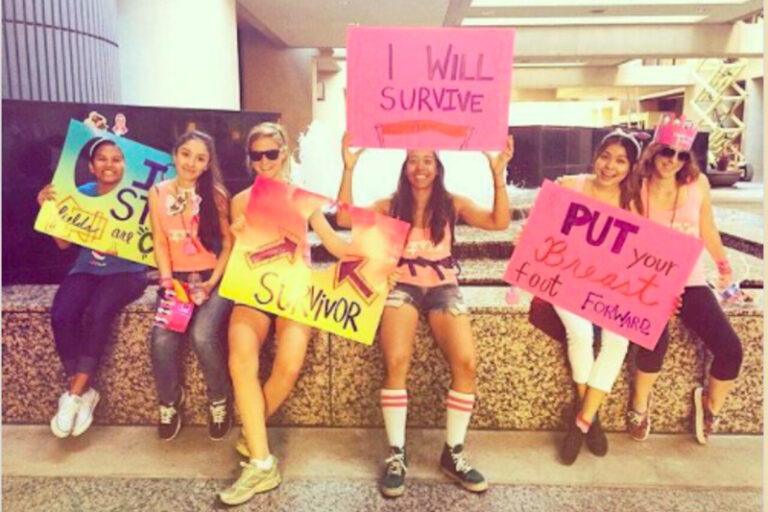

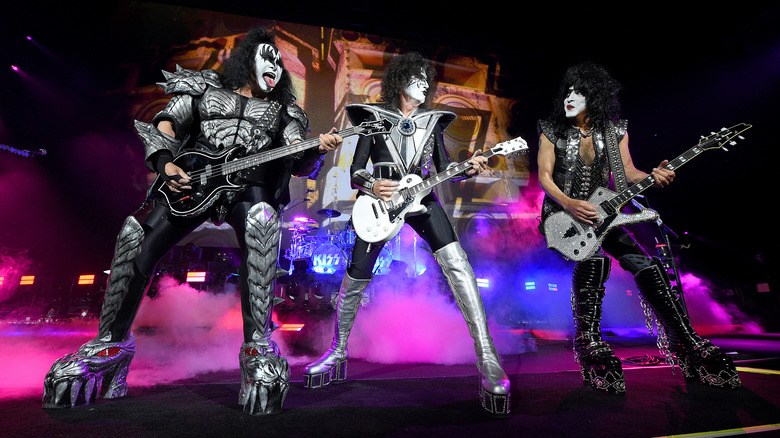







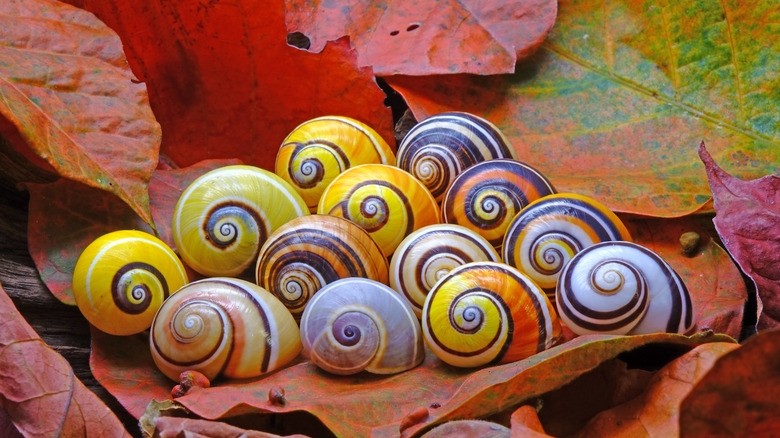

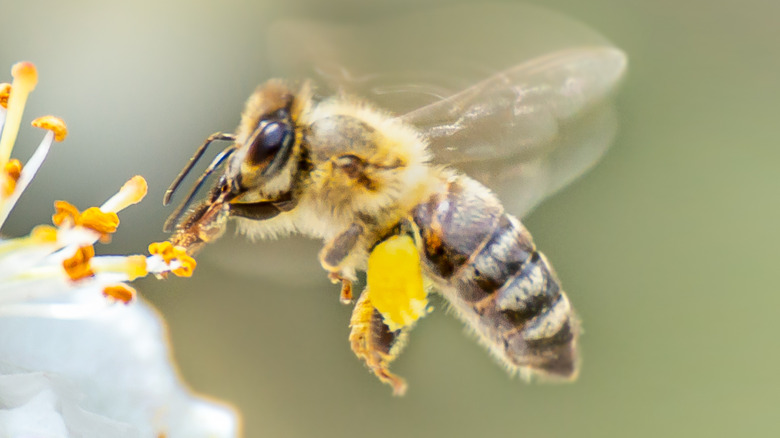




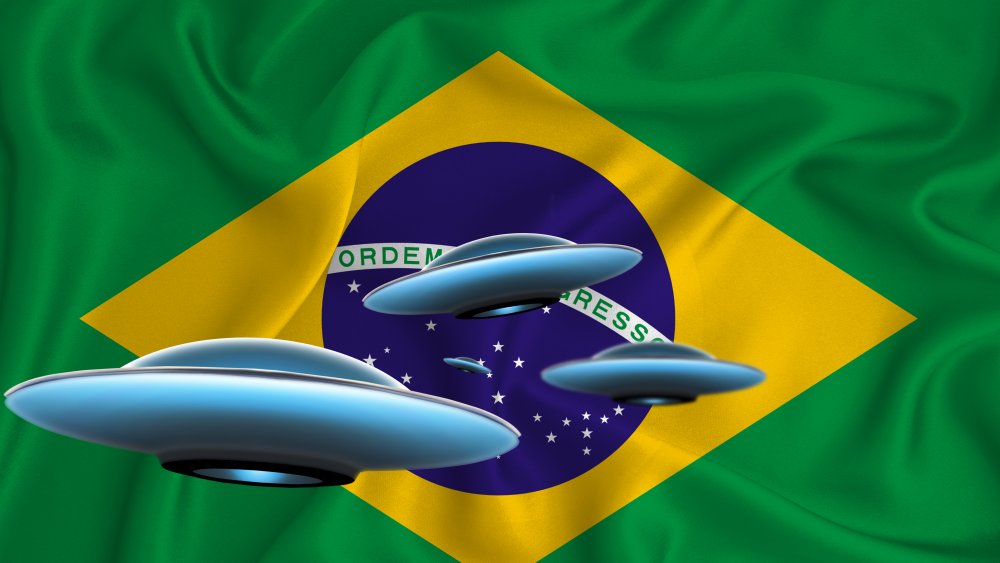




VPS SERVER
Высокоскоростной доступ в Интернет: до 1000 Мбит/с
Скорость подключения к Интернету — еще один важный фактор для успеха вашего проекта. Наши VPS/VDS-серверы, адаптированные как под Windows, так и под Linux, обеспечивают доступ в Интернет со скоростью до 1000 Мбит/с, что гарантирует быструю загрузку веб-страниц и высокую производительность онлайн-приложений на обеих операционных системах.